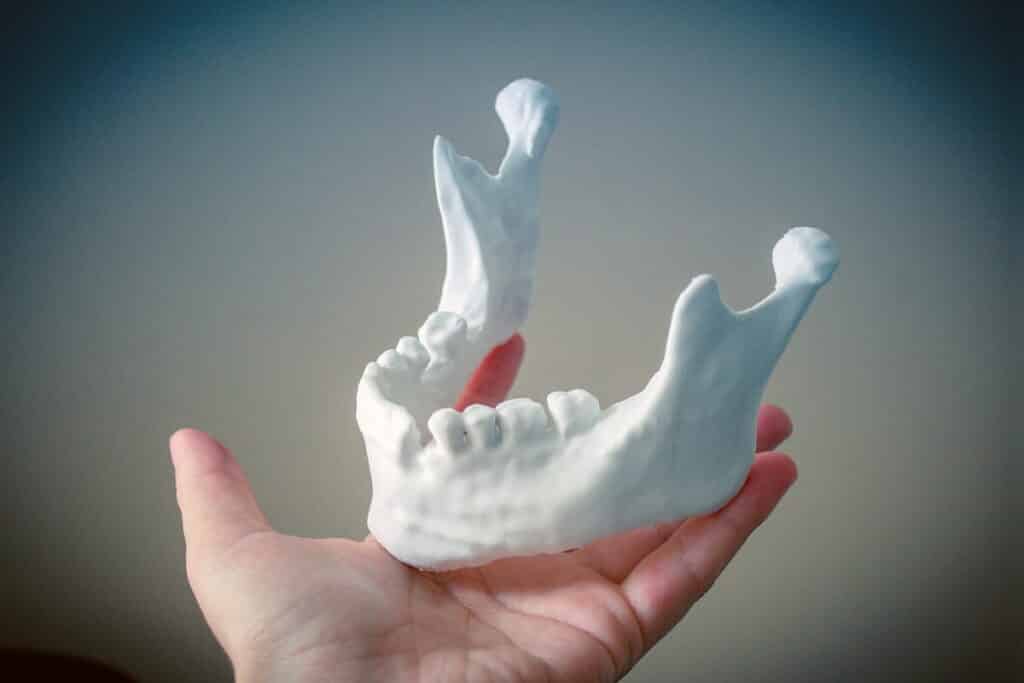Top 5 3D Modeling Software Companies
Table of contents
Table of contents

Upon covering the top five 3D printing startups of 2016, it’s worth noting that, without 3D modeling, 3D printing would be more or less impossible. 3D modeling, or computer-aided design (CAD), is the digital creation of three-dimensional objects for entertainment (animation, gaming, etc.), planning and simulating designs that will be executed in the physical world, or 3D printing.
Because many of the leading companies in CAD are involved in much more than one niche industry, like 3D printing, these companies will be much less volatile on the public markets. Below are the top five 3D modeling software companies. While four are publicly traded, one is just a startup, but an important one. We’ve also thrown in one open-source software tool as a freebie.
Autodesk (NASDAQ:ADSK) – Market Cap $16 Billion
With a market cap of $16.66 billion, Autodesk (NASDAQ:ADSK) is the second-largest developer of CAD software. Most famous for its flagship AutoCAD product, Autodesk now produces a huge suite of programs for everything from 3D modeling to simulation, 3D animation, toolpath planning, and 3D print management. While AutoCAD may be the company’s most popular 3D modeling software for engineers, the company often highlights its newer Fusion 360 program as a means of bringing 3D modeling software to the cloud and Inventor for mechanical design and simulation.
Most recently, Autodesk announced that it would be bundling all of its manufacturing-related software into a single portfolio with the intent of making it possible to transfer files from one program to the next with ease. Among the programs included in this bundle is Netfabb, a popular 3D print prep software that Autodesk acquired in 2015. Netfabb has become an industry standard for repairing files for 3D printing, including optimizing topology to create unique mechanical properties, such as ultra-lightweight and strong structures.
Also within this bundle are Autodesk’s CNC milling software tools from Delcam, acquired by Autodesk in 2014. By lumping this software with Netfabb and Fusion 360, Autodesk aims to make manufacturing a broader category than just 3D printing or milling. At the same time, the software developer is experimenting with new 3D modeling techniques such as generative design, through Autodesk Within, which automatically creates 3D printable models optimized in terms of certain mechanical properties, such as weight and strength.
Though Autodesk may only have the second largest market cap, it is because of this forward-thinking experimentation that the company is number one on this list.
Dassault Systèmes (EPA:DSY) – Market Cap $18.25 Billion
At $18.25 billion, Dassault Systèmes (EPA:DSY) actually has the largest market cap of any CAD developer. By far its most popular 3D modeling software for designing parts and assemblies is SOLIDWORKS, with Dassault claiming that over 2 million engineers and designers and over 165,000 companies relied on SOLIDWORKS as of 2013.
SOLIDWORKS is capable of making solid models for creating individual parts, but cannot employ the surface modeling techniques that Dassault’s CATIA can for more abstract modeling, necessary for modeling entire factories. In other words, SOLIDWORKS can be used to actually manufacture parts, while CATIA is meant for higher-level analysis.
Like Autodesk, Dassault has created a complete ecosystem that encompasses all of its software, which it calls 3DEXPERIENCE. These tools vary from simulation, through Finite Element Analysis with SIMULIA and manufacturing processes like DELMIA, to VR, through 3DVIA.
Siemens (ETR:SIE) – Market Cap $87.34 Billion
Though, with $87.34B, Siemens (ETR:SIE) actually has a much larger market cap than either Autodesk or Dassault, its operations are so far-reaching—covering everything from power generation technology to building automation and railway vehicles—that it is not quite a fair comparison when it comes to CAD tools. Siemens PLM is the giant’s CAD software division, with Siemens SolidEdge and NX representing the company’s two major CAD programs. Whereas SolidEdge can best be compared to Autodesk Inventor and SOLIDWORKS, Siemens NX is best compared to CATIA from Dassault.
SolidEdge is a parametric solid modeling software better suited for designing individual components and assemblies, whereas NX can be used to create entire environments. For this reason, the automotive and aerospace industries rely on NX to not just design parts, but simulate how they will behave with finite element analysis and prepare them for manufacturing.
While “manufacturing” for NX previously meant CNC machining, Siemens recently announced the development of a 3D printing product suite, which will see NX increasingly suited for 3D printing. Users will be able to combine the sort of surface modeling generated by 3D scans with math-based geometry typically associated with engineering software. It will also feature topology optimization for 3D printing, in which models can be made lightweight and strong through changes in the geometry.
These models can then be simulated using Siemens simulation software, both for the physical environment and for the 3D printing process. This makes it possible to see how the part will perform, but also how if it is even printable.
PTC (NASDAQ:PTC) – Market Cap $5.49 Billion
With a market cap of just $5.49 billion, Boston-based PTC (NASDAQ:PTC) may not be quite as large as its competitors. A manufacturer of mid-level CAD software (for parts, rather than complete environments), PTC has been increasingly overshadowed by the likes of Dassault and Autodesk, making PTC’s Creo software for parametric CAD modeling less preferred to SOLIDWORKS and Autodesk Inventor. Nevertheless, PTC remains one of the four leading developers of CAD software.
Onshape – Investment $169 Million
Onshape is a newcomer to the 3D modeling industry, with the Company’s software only recently being introduced to the market; however, many of Onshape’s founders came from the SOLIDWORKS team at Dassault. The firm is entirely focused on cloud-based and mobile CAD, emphasizing the importance of being able to create and share 3D models on the go through a web browser. Because Onshape is cloud-based, designing is meant to run more quickly and smoothly, while also making it possible to collaborate with team members without design redundancies and other issues.
So far, Onshape has received a positive response from the industry, but it is still new and not publicly traded. The four-year-old company has received $169 million in funding so far from early-stage investors of Facebook and Twitter. Their last funding round was a massive Series D round of $105 million which closed in April of this year.
Blender – Free 3D Modeling Software (Open Source)
Blender stands out from all of the aforementioned tools and companies in that it is open source and mesh-based. The software is hosted by the Blender Foundation which is an independent non-profit public benefit corporation which runs on donations. How cool is it that while the entire U.S. seems to be in a state of constant bickering these days, these open-source tech communities manage to band together and produce (and maintain) rich pieces of software with no profit motivations? Ask any software developer and they’ll tell you that it’s no easy task to develop software with large teams, even in a for-profit organization.
Anyways, due to the high prices of most CAD packages, many new designers have turned to Blender. The free program was first adopted by many independent artists and designers to create models for animation and design, but, with the rise of 3D printing, these same people have begun using it for 3D printing.
The difficulty with the program is that, because models made in Blender are mesh-based, they may not always be ideal for engineering or 3D printing. Details made with the software may not be printable and the models themselves may not be watertight, meaning sealed on every surface.
On the other side of the open-source spectrum is OpenSCAD, a purely script-based 3D modeling software. While everything made with OpenSCAD is, by definition, 3D printable, that doesn’t mean it’s pretty. That’s because a script is much better at generating mathematical geometries than organic and random curves.
Conclusion
Of the four publicly traded companies mentioned here, all of them have seen overall growth in the past five years, including PTC. This may be because advanced manufacturing, 3D printing and otherwise, is heavily reliant on 3D modeling and simulation tools to function. Whether or not Onshape will join the ranks of these other heavy hitters is difficult to determine, but we may still be waiting a long time for an open-source tool to match these pricey counterparts, probably due to the heavy funding required to develop these highly capable proprietary tools.
For 3D printing investors, the takeaway here is that 3D modeling does not equate necessarily to 3D printing. While it is true that you need 3D modeling software for 3D printing, it’s not something new. One of the most popular 3D modeling software packages is AutoCAD which was first produced by Autodesk back in 1982. If you look at the breakdown of what 3D modeling software is used for, you’ll see a lot more prevalent uses than just 3D printing. Here’s a breakdown of Autodesk Q1-2016 revenues:

Sign up to our newsletter to get more of our great research delivered straight to your inbox!
Nanalyze Weekly includes useful insights written by our team of underpaid MBAs, research on new disruptive technology stocks flying under the radar, and summaries of our recent research. Always 100% free.
















There are a variety of 3D modeling software companies which are not listed on this forum, including Trimble’s SketchUp, McNeel’s Rhino, and Pixelogic’s ZBrush among others. I’m also surprised the article did not include information related to Siemens and Bentley Systems joint alliance…
Check out 3D ID Secur . com, a start-up with amazing software which takes a basic passport photo and converts to high quality real 3D head shot, can incorporate many other graphic elements (i.e.: backgrounds, foregrounds, logos, unique data) and instantly deliver digital data or print forms, ideal for security industry but also entertainment, social media and other consumer products.